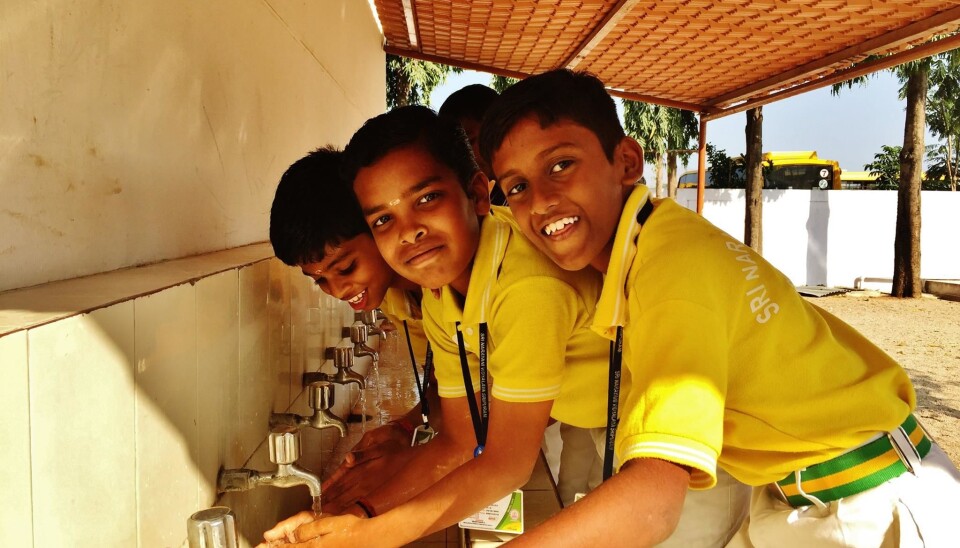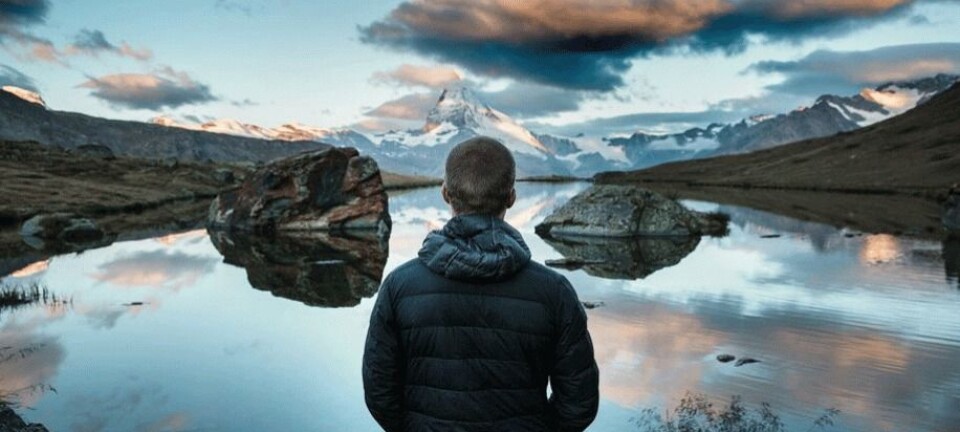This article is produced and financed by the Norwegian University of Life Sciences (NMBU) - read more

The coronavirus leads to the biggest internal migration in India since 1947
1.3 billion Indians have been ordered to stay home, and public transport stopped running overnight. Millions of Indians have to walk hundreds of kilometres to get to their own homes. Researchers now fear that the country is also facing a famine.
‘I notice that people back home are very worried about the spread of the coronavirus in India, although the number of infected cases is still lower than in many other countries,’ says Darley Jose Kjosavik. Originally from Kerala, a state in the south of India, she is currently working as a researcher at the Department of International Environment and Development Studies (Noragric) at NMBU.
India is among the countries that have introduced the most stringent measures to prevent the mass spread of COVID-19. On 24 March, Prime Minister Narendra Modi told the Indian people to stay home – the curfew applies to the whole country until after Easter.
‘This is of course very challenging, and basically impossible for homeless people, or people who live in crowded slum areas,’ says Kjosavik. Furthermore, millions of migrant workers have to travel a long way to get home – hundreds of kilometres in many cases. Since there are no buses or other types of public transport, their only option is to walk. This means that there are currently huge numbers of people on the move across India, which makes this the biggest migration the country has seen since India and Pakistan became independent states in 1947.
Can lead to famine
The country shutting down particularly affects people who depend on daily wages to make a living. The Indian authorities have introduced a crisis package of USD 22.5 billion to help the country through this difficult time. However, it is far from certain that the money will benefit all population groups.
‘As part of the crisis package, people with a minimum wage of 5,000 rupees per month are now entitled to 500 rupees per month. That is around seven dollars, and far from enough to make a living,’ says Eva Døgg Davidsdottir, research fellow at Noragric.
She believes that the situation can quickly result in a humanitarian crisis, not as a direct consequence of the coronavirus, but as a result of the strict measures. Davidsdottir believes the measures are ill-considered.
‘As far as I can gather, this money will be channelled through existing welfare schemes, which there are many of in India. But we already know that bureaucracy takes too long, and we may be facing a famine before the money and measures are actually implemented,’ she says.
Davidsdottir says that it is not uncommon for India to implement urgent decisions that have serious financial consequences. In 2017, Prime Minister Modi decided to withdraw 85% of India's currency notes from the economy overnight, as a measure against the black economy. The decision led to a crisis that particularly affected the informal economy. In India, 93% of workers work in the informal economic sector.
Difficult times ahead for marginalised groups
There are big class differences in India, and marginalised groups, be they Muslims, migrant workers or even women, will really feel the impact of this crisis, emphasises NMBU researcher Sheri Bastien at the Department of Public Health Science.
‘There are also tens of thousands of migrant workers, for example from Nepal, who cannot cross the border. It is usually not up to people themselves whether they want to comply with the measures. Many just don't have the opportunity to do what the authorities ask them to do,’ she says.
Bastien believes that, in the longer term, the situation can create social unrest and increased violence in the country.
‘People may become increasingly desperate to create an income, and respect the measures even less to that end. We don't know yet, but that’s part of the risk involved in this type of lockdown,’ she claims.
Tip of the iceberg
At the same time, Bastien believes that the number of registered cases of infection in India is just the tip of the iceberg. Among other things, there is a great lack of test equipment. According to statistics, as of 6 April there were around 3,600 registered cases of infection in the country.
‘I’ve talked to our partners in India, who have adopted a wait-and-see approach for the time being. But I think we will see growing concerns among the people we know there as the numbers start to rise. I believe that we have only seen the beginning.’
Bastien is part of what is known as an action-based research project that spreads knowledge about good hand hygiene among students, teachers and nurses. Through the project’s partnership with Rocky Mountain Soap Company in Canada, the local population learns how to make their own soap that they sell, among other things. One of Bastien's colleagues at the Department of Public Health Science, Anise Gold-Watts, is in the process of finishing her doctoral thesis on how sanitary and health practices can be improved in rural areas in India. The thesis is part of the project SHINE (Sanitation and Hygiene INnovation in Education)
‘In the area where I conducted my studies, Vellore in South-East India, people are very dependent on the monsoon rains to fill up the water reservoirs. Last year, people here were facing a water crisis. Rain was scant compared with previous years, and the situation caused by the water shortage was fairly extreme. The situation is not that bad now, but because of climate change and people’s dependence on the rain, it is still quite scary. They also depend on rainwater to wash their hands, which is of course vital in stopping the spread of the coronavirus,’ says Gold-Watts.
She points out that private health services in India have been strengthened in recent years. However, the most vulnerable groups and people in rural areas cannot afford such services. Investments in public health care have been low. In many places, the only hospital in the area is private.
Muslims become the scapegoats
Eva Døgg Davidsdottir, for her part, has followed how the situation has developed for one of India's most vulnerable marginalised groups – the Muslims. For a long time, the policy of Prime Minister Narendra Modi has discriminated against this population group. In December 2019, the Indian parliament introduced a new act that enabled illegal immigrants to become Indian citizens. But the act did not apply to Muslims.
‘This led to enormous demonstrations in Shaheen-Bagh, a Muslim neighbourhood in Delhi. The protests escalated in February this year, resulting in tens of deaths and hundreds of people sustaining injuries. The curfew has put a stop to the demonstrations,’ Davidsdottir tells us.
The authorities’ discrimination of Muslims is also reflected in the virus situation the country is now facing. The hashtag #CoronaJihads is trending on Twitter and is, among other things, used by Hindu nationalists to accuse the Muslims of spreading the virus, according to TIME magazine. ‘Islamophobia has been transposed onto the coronavirus issue,’ says Amir Ali, assistant professor of political science at Jawaharlal Nehru University in Delhi to the magazine.
Big differences
In Kerala, the state where Professor Darley Jose Kjosavik is from, the situation is a great deal better. This state in the south of India has one of the most educated populations in India, as well as relatively good health services.
‘We also see that both the authorities and volunteers are providing free meals and other assistance to people who need it. The situation for people here is different from that in other states, particularly when compared to North India,’ she says. At the same time, Kerala is one of the states with the most infected cases. Many people live abroad, or travel more than is usual in many other parts of the country.
‘However, Kerala has a strict system in place to keep an overview of who has been in contact with infected persons. They are isolated, so the spread of infection is contained,’ Kjosavik claims.
In India, as in many other countries, the coronavirus arrived as a stowaway on a journey from Italy.


































